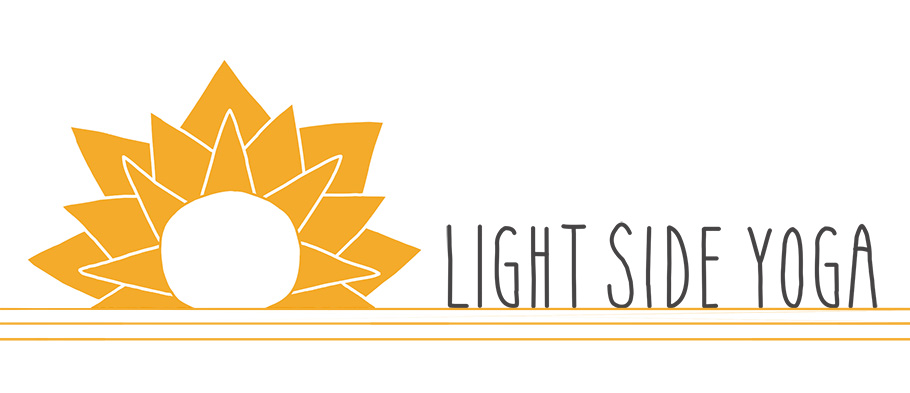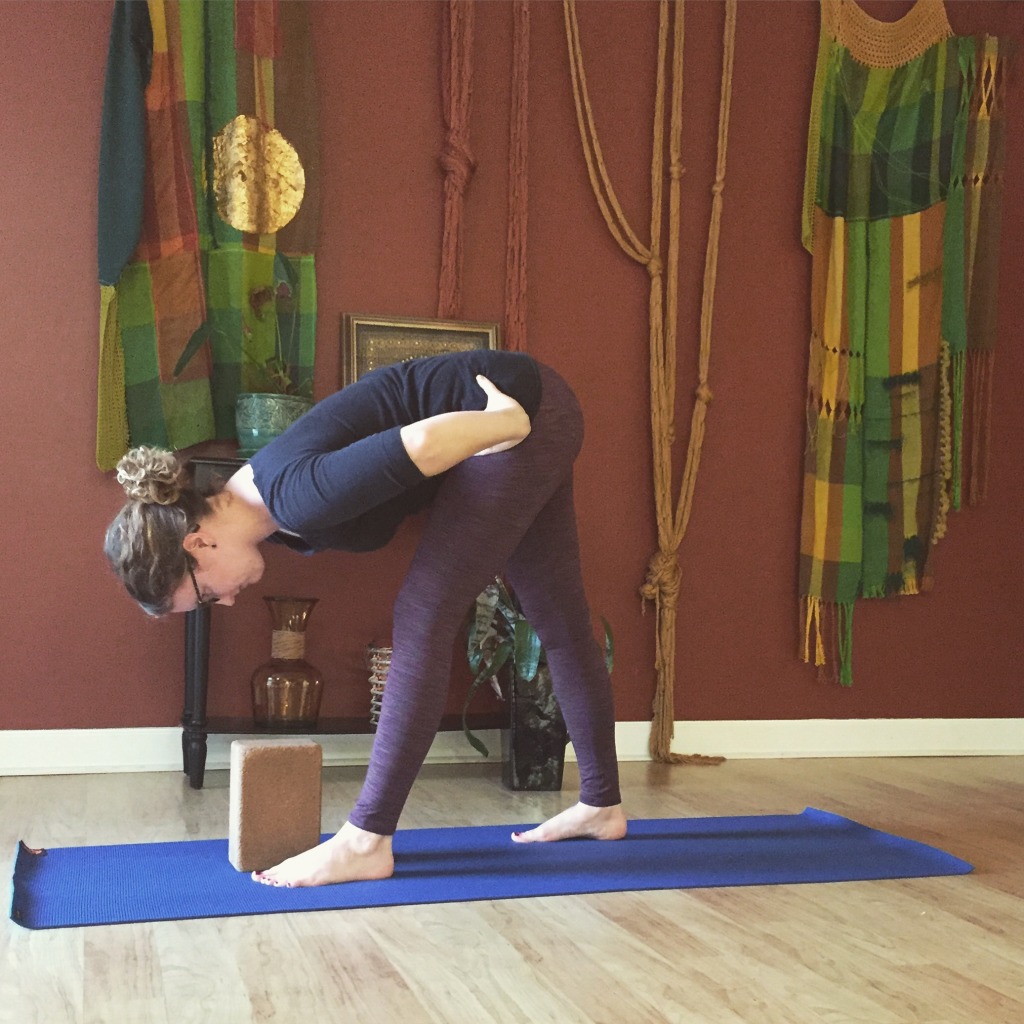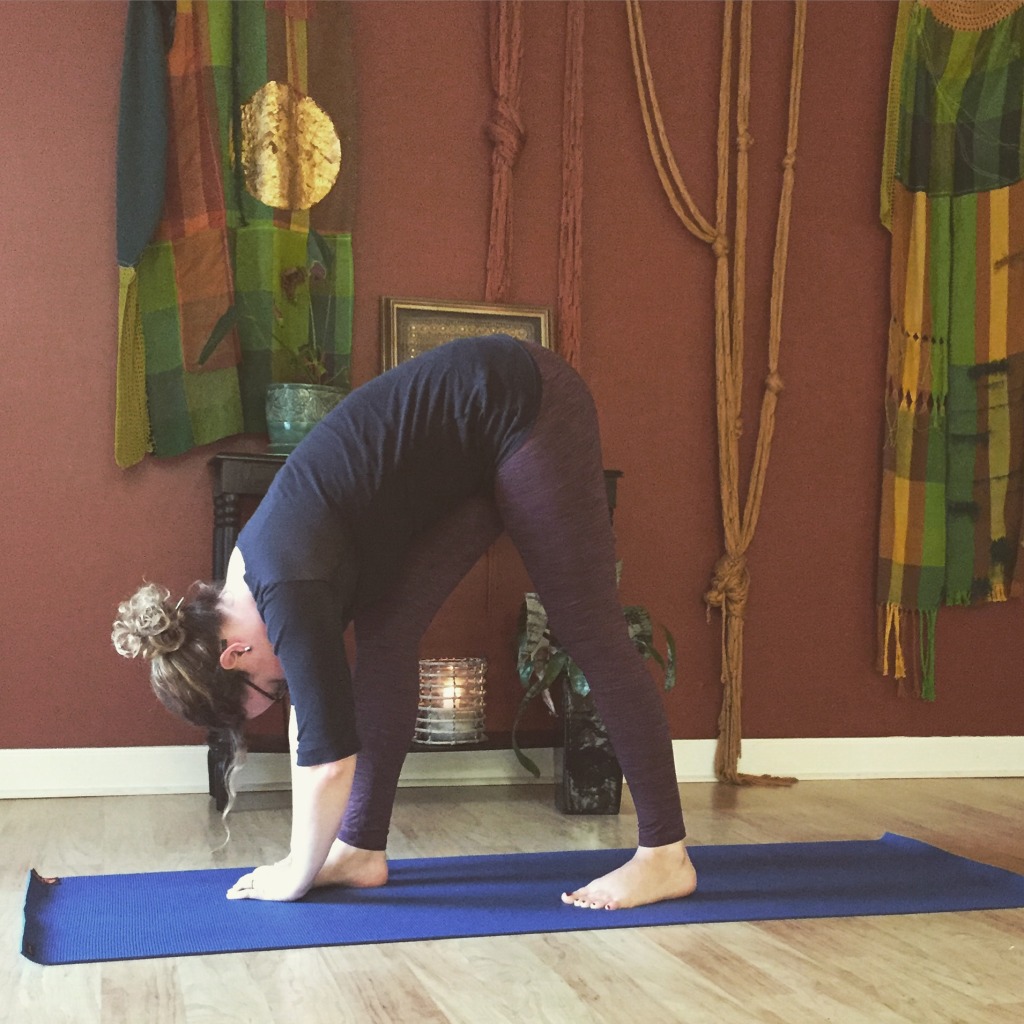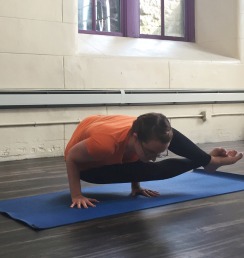“When will I be flexible?”
A new student recently asked me somewhat dejectedly, “when will I be flexible?” We were working one-on-one about to go into Pyramid pose. Pyramid can be an intense and intimidating hamstring stretch. I felt for her in that moment and wished I could say, “Just do this for 5 minutes a day for a week and you’ll be ready for a yoga photo shoot!” Unfortunately the answer isn’t so straightforward, and I see a lot of people struggle as they work on flexibility.
Flexibility takes consistent effort. Trying a new stretch once every few weeks won’t lead to any progress. Getting to a yoga class or two each week will offer more improvement. More importantly, bringing the alignment principles from yoga class to your everyday life will create changes in your body. For me, yoga helped me improve my posture. I sit up straighter when I’m driving or at a desk and that helps me keep correct alignment when I’m bending over or practicing Forward Fold. Off the mat work is important because yoga isn’t really about touching your toes. The real physical benefit of keeping your body healthy is having lots of functional range of motion, so you can take long walks and sit on the floor with the kids in your life. Instead of focusing on how a pose looks, appreciate how your yoga practice impacts your everyday movements, making things a little easier or less painful.
As you dig deeper, flexibility takes mental work too. The tension you feel at the edge of a stretch is your nervous system warning you that you are going beyond your normal range of motion. Sometimes a deep stretch even elicits a “fight or flight” response, depending on how deeply you go into a stretch. Pranayama, or breath work, helps to relieve the stress on the nervous system. Deep breathing calms and relaxes your body and may allow more stretching. With consistent practice, your normal range of motion is expanded and deep stretches become more available to you. The only caveat is that sometimes anatomical structure can limit a pose. Not everyone’s hips can allow a deep forward fold with the chest resting on the thighs. No two bodies are made the same, and even either side of the same body can have different structural limitations.
As well as creating a stress response, students are sometimes surprised by the emotional connection that deep stretches bring to the surface. These poses ask us to surrender and release fear, anger, tension, and sadness. Developing a witness mentality prevents getting caught up in these emotions. You can simply notice the sensations that come up and not get involved in them. It used to sound airy-fairy to me, but it really is deep and tough work to let go of negative emotions.
With so many different factors, flexibility can be tricky. Sometimes my depth in a pose can vary from practice to practice. I try to focus on the latent benefits of working on flexibility and not get caught up in how each pose looks on my body. In practicing yoga and improving flexibility, we can feel better off the mat.







